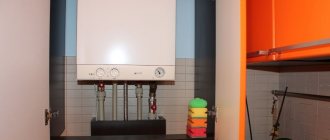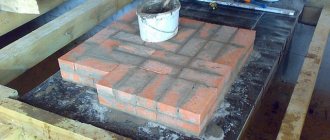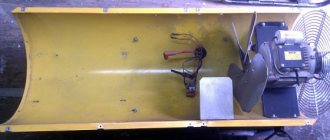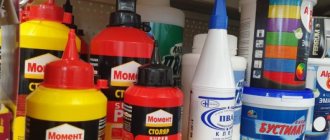But, if surface or deep devices are used to pump clean water without large particles, then special fecal pumps will have to be used to pump dirty water with various contaminants and waste products.
The main feature of such devices is that they do not stop working even when large particles get inside.
Therefore, such equipment is usually used to remove contaminated liquid from cesspools and septic tanks in the private sector.
Since fecal pumps are specialized equipment, a whole range of factors should be taken into account when choosing them.
We will consider the basic technical parameters of these devices, and the rating of the best fecal pumps according to the 2022 version in price/quality ratio will help you choose the appropriate model.
Rating of the TOP 15 best fecal pumps of 2022
| Place | Name | Price |
| TOP 3 best fecal pumps by price/quality for 2022 | ||
| 1 | JILEX Fekalnik 230/8 | Find out the price |
| 2 | VORTEX FN-1500L (1500 W) | Find out the price |
| 3 | BISON NPF-450 (450 W) | Find out the price |
| TOP 3 best fecal pumps with a grinder | ||
| 1 | VORTEX FN-2200L (2200 W) | Find out the price |
| 2 | UNIPUMP FEKACUT V1300DF (1300 W) | Find out the price |
| 3 | BELAMOS DWP 1300CS | Find out the price |
| TOP 3 best fecal pumps with soft engine start | ||
| 1 | Pedrollo VXm 10/50 (750 W) | Find out the price |
| 2 | DAB FEKA VS 550 MA (927 W) | Find out the price |
| 3 | Pedrollo VXm 15/35 (1100 W) | Find out the price |
| TOP 3 best fecal pumps with overheating protection | ||
| 1 | BISON NPF-250 (250 W) | Find out the price |
| 2 | Sturm! WP9775SW (750 W) | Find out the price |
| 3 | Pedrollo MCm 30/50 (2200 W) | Find out the price |
| TOP 3 best centrifugal fecal pumps | ||
| 1 | CALIBER NPTs-1400U (Aqua Line) (1400 W) | Find out the price |
| 2 | Sibrtech SFN250 (250 W) | Find out the price |
| 3 | CALIBER NPC-1100U Aqua Line (1100 W) | Find out the price |
Product marking
It is applied to identify the specimen as belonging to a particular model. In this case, the name and main technical characteristics are indicated on the plate.
The installation of such plates on the body is intended to facilitate identification when choosing a product, and with an initial familiarization with the technical characteristics of the product.
Popular manufacturers of fecal pumps
As noted above, fecal pumps are produced by many manufacturers. The most popular of them are:
- Pumps manufactured by Pedrollo . Used for pumping heavily contaminated wastewater. The most popular equipment lines are VXm MC/MCm. The first of them, less powerful, operate on a 220 volt network and have a minimum power of 0.6 kW. They are the most popular for use in fecal sewers in private homes. The permissible size of solid inclusions is 35 millimeters. Main technical characteristics:
- engine voltage – 220 or 380 volts;
- maximum emptying rates from the bottom are 40-55 millimeters;
- working pressure from 15 to 66 liters per hour;
- immersion depth indicators - 8-22 meters;
- the diameter of the outlet pipe is 1.5-2.5 inches.
- Grundfos SEG sewage pump . The unit is equipped with a grinder and is designed for pumping sewage, drainage water, and wastewater. It is capable of pumping wastewater over considerable distances, but the pipe size is limited to 40 millimeters.
Main characteristics of the equipment:
- body material – cast iron;
- the pump is equipped with an impeller adjustment system;
- 2 relays are installed to protect the device from overheating;
- used for pumping to a depth of 10 meters;
- the maximum permissible temperature of the pumped liquid is 40 degrees.
- Sewage pumps Gillex . The company produces two types of pumps – Fekalnik and Drainazhnik, the names of which indicate their purpose. The acceptable size of solid inclusions is 35 millimeters. Main technical characteristics:
- productivity 160-260 liters per hour;
- immersion depth – 6-11 meters;
- installation of a float switch.
- Sulzer – pumps for pressure sewerage. Strictly speaking, this is a station for pumping fecal wastewater with its simultaneous processing to a liquid state. Its advantage is quick installation and startup. The station is equipped with a reliable check valve and a powerful solids grinder.
Vortex
fecal pump is designed for pumping wastewater with strong fibrous contaminants.
Used for domestic purposes. Main technical characteristics:
- power 450-1500 watts;
- pressure 9-18 meters;
- productivity 16-24 cubic meters per hour;
- solid inclusions of 15-42 millimeters are allowed;
- permissible liquid temperature is 40 degrees.
A pump for forced sewerage in a private house in some cases is a forced solution, depending on the landscape of the area in the development region.
Installation of a fecal pump
Installing a sewage pump is a responsible undertaking, on which comfortable and safe living in a private home depends. This in itself is not such a difficult undertaking and can be done independently.
Installation of the SFA SANIPLUS SILENCE pump - INSTALLING THE PUMP
But the stable and correct operation of this system is extremely important. Therefore, it is better to entrust its installation, especially in difficult cases, to specialists. But this does not mean that you do not need to have knowledge of how it works in order to carry out qualified installation control.
How to choose a fecal pump?
The main function of a fecal pump is to remove accumulated wastewater. Therefore, the main characteristic of the device is the ability to pump out contaminated liquid as quickly and completely as possible. This characteristic is directly affected by the power of the equipment.
When choosing a fecal pump, attention is paid to other parameters:
- Availability of filter . It is advisable that the equipment be equipped with a mesh filter, which will prevent solid particles from getting inside and prevent breakdowns.
- Cutting mechanism . This element is not present in all models, but it is still desirable to have it. This mechanism makes it possible to grind solid particles found in wastewater.
- Adjusting the water temperature . As a rule, the water temperature in the street sewer is cold, but if it is high, pumping out such liquid can damage the pump. In this case, it is desirable that the water temperature can be adjusted.
- Pump type . According to this criterion, devices are divided into surface, semi-submersible and submersible. Devices of the first type are compact and mobile, but are not capable of lifting pollution from the bottom of the cesspool. In semi-submersible models, the motor is located outside, and the pump itself is immersed in the liquid for better pumping. Submersible pumps are the most powerful and efficient. They are large, but allow you to completely pump out contaminated liquid and solid particles from the cesspool.
Rules for using equipment
Every technically complex mechanism can quickly break down if used incorrectly. For example, the operation of a submersible pump after pumping liquid from a container. This type of pump uses pumped wastewater for cooling. If the drains run out and the pump continues to work, the engine will quickly burn out from overheating.
The same thing will happen if you use the equipment for other purposes. For example, it is dangerous to pump out drainage water with it. The reason is that there are a lot of hard stones in the pumped liquid. In the shredder, these particles will damage the knives, and the pump will no longer be able to work normally.
Before putting the fecal pump into operation, you must familiarize yourself with the operating rules. Violation of them may result in early termination of the equipment warranty.
Which company should you choose?
Since fecal pumps are considered specialized equipment, few companies produce them. But, nevertheless, the range of this equipment is quite extensive.
As an analysis of user reviews and expert advice for 2022 showed, the best manufacturers of fecal pumps were recognized as the companies GILEKS, VIKHR, ZUBR, UNIPUMP, BELAMOS, Pedrollo, DAB, Sturm!, Sibrteh and CALIBR.
The most functional and reliable models of these brands were included in the rating.
Main varieties
With all the variety of models of such equipment, they are divided into several categories:
Submersible units are made from high-strength materials and are equipped with a float on/off device. The housing is sealed and equipped with durable gaskets, reliably protecting the internal structure from the penetration of aggressive liquids. The main area of application of submersible devices is for pumping out the contents of cesspools, but they can be just as successfully used for pumping out storm sewer collector wells. And absolutely nothing prevents them from being used for watering vegetable gardens. Thus, by purchasing a submersible unit, you can solve many problems.
Installation of such a pump is carried out by attaching a suction pipe to the bottom of the tank, to which the unit itself is attached. The float switch ensures timely shutdown of the unit, preventing it from operating outdoors. The pumped substance plays the role of a cooling agent. A submersible sewer pump in a private home is one of the most reliable units in its class.
Semi-submersible fecal models are characterized by a reduced size of the outlet pipe. The maximum particle size is 15 millimeters. But such devices are equipped with a solid inclusion destroyer, so they are successfully used for pumping sewage waste in a private home. Semi-submersible units are most often installed on a floating platform, and their position always corresponds to the level of the pumped liquid.
When installing such a unit, the lower part is located in the liquid, the upper part is above its level.
Surface pumps are usually installed outside the tank and therefore require the use of a protective casing. Such units are not characterized by high productivity, and the maximum permissible size of solid inclusions is no more than 5 millimeters. However, the long service life and very affordable price of such a unit make it very popular among residents of country houses.- Domestic sewage pumping stations are designed to solve a number of specific problems related to the organization of wastewater disposal. In this case, the following points are resolved:
- the possibility of including plumbing equipment located below the level of the main sewer line into the general drainage system. The equipment allows you to lift liquid to a height of 5 to 15 meters, which allows you to place household plumbing in the basement and basement floors;
With the use of such equipment, it becomes possible to transport wastewater over a distance of up to 100 meters, without worrying about compliance with slope rules for gravity systems. The problem of possible seasonal soil movements that deform an extended pipeline is also being solved.- The use of a grinder in a sewerage pumping station makes it possible to obtain a pumped-out substance of a homogeneous mass, which makes it possible to use pipes with a diameter of 40-50 millimeters.
- Such installations make it possible to introduce a carbon filter into the design, which eliminates the smell of sewage from the room.
The criteria for choosing a station installation are the following circumstances:
- The depth of the location of the main sewer system and the presence of a height difference between them and the connected plumbing equipment.
- Type of wastewater - temperature and characteristics of contaminants.
- The estimated volume of sewage waste expected to be pumped by the pumping station when used in normal mode.
- The need for a device to operate in automatic mode and the choice of method for controlling the installation.
Pumping units for domestic use are available in compact designs and can be installed directly under the sink, bathtub or behind the toilet without taking up much space.
Design and principle of operation of the drainage system
Pumps for pumping are divided according to the principle of operation:
- Vibrating.
- Vortex.
- Centrifugal.
Vibrating
The principle of its operation is based on the occurrence of an electromagnetic field. It is created by installed coils. Once the existing rubber diaphragm flexes, low pressure is created, which causes water to be sucked in. However, due to voltage surges in the electrical network, malfunctions may occur.
Vortex
The work process is carried out under the influence of a vortex wheel. It is a metal disk with blades. When suctioned, the water twists into a spiral that resembles a vortex. This type of device provides high performance.
Centrifugal
A centrifugal force is generated inside the body, under the influence of which the water is set in motion. When the blades rotate, it is sucked in and pressed against the walls, and then pushed out. The centrifugal unit is capable of working with high temperature liquid.
Main selection criteria
When choosing a fecal pump, you should consider:
- planned volume of pumped liquid;
- the depth of the future dive;
- distance from water intake to destination point;
- pressure force;
- the diameter of the main passage of the pipe through which sewage will be transported to the septic tank;
- type of engine cooling;
- location of pipes.
Choose a pump of the required power
When choosing a suitable model, first of all you should pay attention to the performance of the device. The higher this indicator, respectively, the greater the speed of the device. The average for the diameter of the main passage of the sewer pipe is up to 0.8 cm
The larger the diameter, the higher the proportion of foreign matter present in the dirty liquid that the pump can ultimately pump.
The maximum pressure of the device should also be taken into account. Conventionally, 10 m is considered the average value - this value is enough to raise the liquid to a height of 10 m and then transfer it 120 m in the horizontal direction.
For uninterrupted operation, the device must have suitable power: the more people live in the house, the higher the power of the pumping equipment for pumping out wastewater should be. As a rule, it reaches about 25 cubic meters. m/h, the maximum power of a submersible pumping station is up to 40 kW, which allows you to pump and push liquid to a height of 15–20 m (about 400 cubic meters per hour).
As for the type of cooling of the drive motor, it must cope well with heavy loads so that the pumping unit operates without overheating.
The device of cutting elements of the fecal pump
The last but not least important aspect of the choice is the type of pipe arrangement, which will directly determine the future installation method. Typically, installation comes down to placing a special pipe at the bottom of the tank, and guides on the walls to lower or, if necessary, raise the equipment along a cable or chain.
The process of descending to the bottom of the pit is quite simple: the pump for pumping out the sewage system is easily attached to the pipe under its own weight. A vertical type pipe is more convenient than a horizontal one, since it is easier to screw a pipe into it from above, while the latter will require an additional adapter.
Formula for calculating diving depth
It is easy to determine the height to which the pumped wastewater should be raised using the formula G + D/10, where: G - immersion depth, m; D is the length of the hose from the cesspool or septic tank to the place of waste disposal, m; 10 - division of the value by 10, since 1 m of vertical length is equal to 10 m in a horizontal position.
Diagram: immersion of the fecal pump
For example, the pumping unit is lowered 6 m deep, the distance to the place where the liquid will go is 30 m. We carry out the calculations: 6 + 30/10 = 9 m, therefore, for forced sewerage, equipment will be required that raises the wastewater to a height 9 m.
Types of drains
- Surface.
- Submersible.
Superficial
The engine remains on the surface during operation. It is usually installed close to the source. Often its arrangement is carried out on a float raft.
Dirty liquid is pumped through a special hose or pipe. Due to its mobility, the surface unit can be moved from one place to another as it is used. The main condition is the availability of a power source.
Overview of possible options
A pool in the basement, garden or home should ensure the safety of swimmers. Therefore, the presence of blooming water in the bowl that does not meet the requirements of sanitary and hygienic standards should under no circumstances be allowed. To prevent problems and timely cleaning of the walls of the bowl, water is periodically pumped out of the pool using various pumps.
1. Immersion format – a combination of simple design and impressive functionality
Using submersible pumping equipment for his pool, the developer will be able to pump water through a grate located in his body. Using the equipment is very simple - it is placed on the bottom of the pool and the motor is started, after which the water is pumped and supplied upward. The device is used not only for pools, but also for draining wells, cesspools, basements and cellars.
Among the advantages of the pump, it is worth highlighting its prevalence, light weight, compact dimensions and affordability. The disadvantages also cannot be ignored. They are represented by limited performance.
2. Surface pump – ease of use and high power
If for some reason the developer does not consider the possibility of using submersible equipment, he still has the option of using a surface pump. It has a completely different format. The equipment is placed above the surface of the water surface, and a special flank connected to the body is lowered into a bowl of water. When the equipment motor is started, water begins to be pumped out of the tank.
Recommendations for use
In order for the pump for pumping out dirty water to work without interruptions and frequent breakdowns, it is necessary to follow certain rules for its use. This also includes the conditions that must be created when operating the drainage pump.
- The ambient temperature in which the self-priming pump for dirty water operates should not exceed 40°.
- The density of the liquid for pumping out which self-priming drainage pumps are used should not exceed 1000–1200 kg/m3.
- The amount of solid inclusions in the liquid medium that the drainage pump will pump out should not exceed 10%.
- Industrial hydraulic machines for contaminated water are connected to a three-phase electrical network with a voltage of 380 V, household models - to a single-phase one (with a voltage of 220 V and a frequency of 50 Hz).
Where to drain?
The scope of use of the pumped liquid directly depends on its actual condition. If it is too dirty, then if there is a centralized sewage system, it can be pumped into it. Some decide to use the liquid by pumping it into settling tanks, collectors, and filtration fields. After purification, it can be used for technical purposes.
If we are talking about agriculture, then such a water pump can pump water for irrigating fields from artificial and natural reservoirs. In some cases, it is permissible to use drainage mud pumps for pumping/pumping drinking water. For example, for a summer shower, a bathhouse, and the like.
Motor pumps
Motor pumps are centrifugal pumps that are additionally equipped with a diesel or gasoline engine, which makes them mobile and independent of power supply. This option is indispensable if there is no electricity at the dacha and the garden needs to be watered. Advantages:
- Mobility and compactness;
- Independence from electricity.
Motor pump
Disadvantages:
- Fuel costs;
- Even motor pumps with maximum power can lift water to a height of no more than 8 meters;
- Productivity, as a rule, does not exceed 2000 l/minute;
- Before starting the unit, it is necessary to fill the working volume with liquid.
- The noise level is higher than that of surface pumps;
- Exhausts and smell.
In-house sewerage installations
Sewage pumps are also called small-sized pumping stations, which are designed to be built directly into the sewerage system inside a country house. Structurally and in terms of operating principle, such pumps resemble analogues from washing machines.
Such models of fecal pumps belong to the premium segment of plumbing and cost a lot. However, thanks to them, toilets, showers and washbasins can be installed almost anywhere in a residential building. They calmly pump wastewater even through pipelines inclined upward.
The design of this pumping station was originally based on the principle of self-cleaning. It is undemanding in terms of maintenance; it is enough to only occasionally rinse the tank from silt deposits.
It also has a carbon filter and a check valve. The first eliminates the appearance of sewer stench in the room, and the second prevents the return of waste from the sewer back to the storage tank. Fecal pumps for toilets prevent blockages and provide forced drainage of wastewater.











